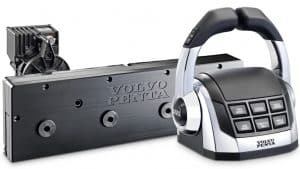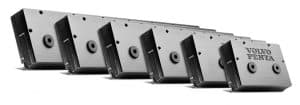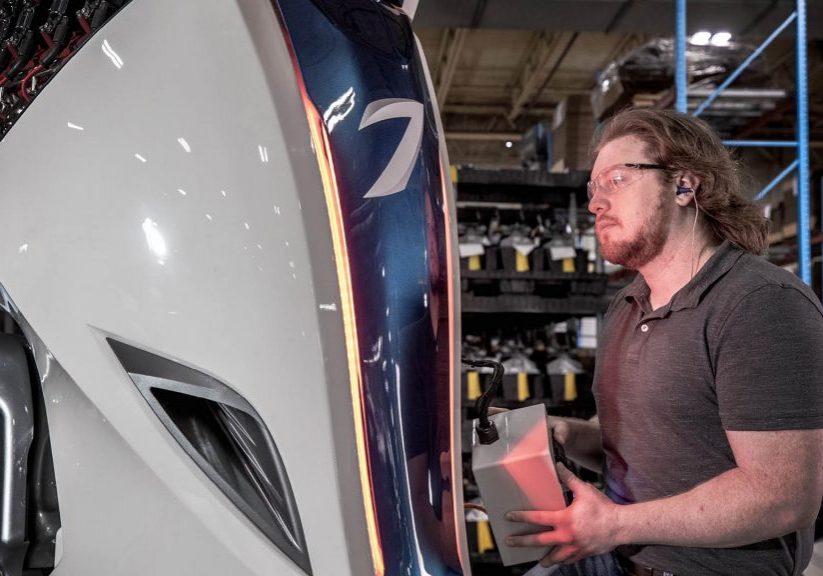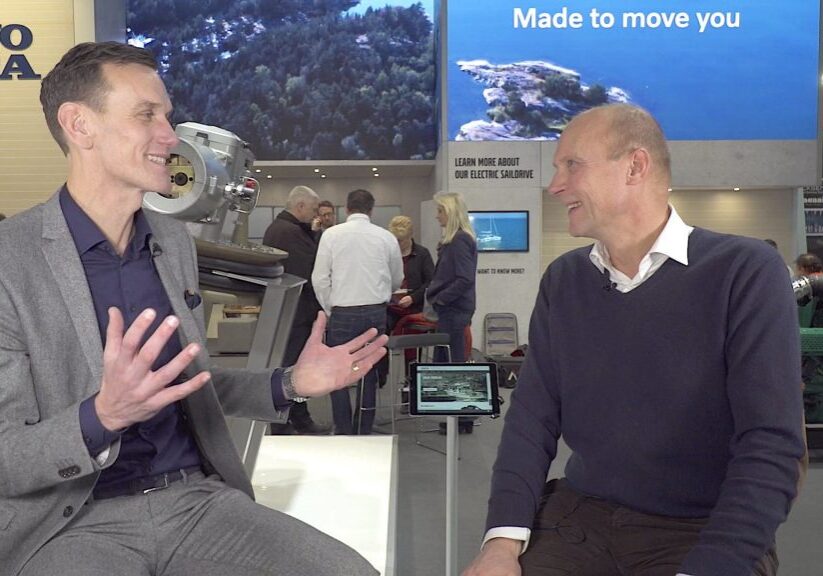Volvo Pentas så kallade interceptorteknik förenklar båtmanövreringen genom att man själv slipper ställa in det optimala trimläget.
Det är en avancerad teknik som reagerar blixtsnabbt på vågor, vindar och strömmar. Samtidigt som det är bekvämt för föraren så förbättrar det också prestandan genom att interceptorbladen bygger upp ett önskat tryck under skrovet.
Billigare drift
Bladen, som arbetar vertikalt, skapar då en lyfteffekt under skrovet med följden att vattenmotståndet och bränsleförbrukningen minskar.
Fram tills nu har dock denna teknik funnits för riktigt stora ekipagen men nya Interceptor System 300-1050 öppnar möjligheter för fler. Nu kan båtar ända ner till runt 30 fot begåvas med denna teknik.
Det finns dock fortfarande en begränsning i att de måste vara ett dubbelmontage av Volvo Penta D4 eller större.
Upp till fyra blad
– De nya bladstorlekarna ökar verkligen utbudet av båtar som kan använda vårt Interceptor System. Upp till fyra blad kan användas i en installation. Varje sida av båten hanteras som en enhet, säger Marcus Pettersson, produktutvecklare på Volvo Penta.
Mer information om Volvo Pentas interceptorteknik här.
Se också:
Hamnen.se testar Volvo Pentas autotrimplan.
Pressreleasen i sin helhet:
Volvo Penta has created additional sized interceptor blades and further software options to expand the Interceptor System 300-1050. The modifications mean that the system now has greater functionality and is available for a wider range of boats.
Volvo Penta has added smaller interceptor blades, of 300mm and 450mm, to its range so that the new Interceptor System is available in six sizes, up to 1050mm. The extension of the range means that compact vessels with twin four-liter engines up to large boats can now use the system. The new smaller blades can also be fitted alongside larger sizes – for example, 450mm and 1050mm to equal 1500mm – to create an even greater number of sizing options.
Marcus Pettersson, product development specialist for vehicle electronics at Volvo Penta, says: “The new blade sizes really widens the range of boats that can use the Interceptor System, from smaller boats with twin four-liter engines to much larger boats. Up to four blades can be used in an installation, and can be combined as required for the boat. Each side, port or starboard, are treated as one unit and used together.”
When the interceptor system is deployed, the blades lower into the water vertically and create hydrodynamic pressure which produces lift to the stern, enabling the boat to accelerate to the plane smoothly for a perfect running attitude. The result is less friction with the water and therefore less fuel required to power the boat at speed. Consequently, better fuel economy means lower total cost of ownership. The blades can be operated individually to control list, and full blade stroke deployment is 50mm.
New software for more options
Volvo Penta Interceptor System 300-1050 has new software and is available in three versions:
• Manual (fitted as standard) – for operator-led trim functions.
• Auto trim and list (as an option) – by continuously compensating for wind and load, to automatically correct and optimize trim and list performance.
• Auto, trim, list and coordinated turn (as an option) – to automatically control list angle during a turn, as well as optimization of general trim and list functions. With the coordinated turn, the boat turns quickly while remaining as upright as possible, for optimal visibility and onboard comfort.
“The whole system provides stabilization and a smooth comfortable ride, and is really easy to use,” adds Pettersson.
One control unit with easy upgrades
The Interceptor System is integrated into the Electronic Vessel Control (EVC) for ease of operation and monitoring. The automatic options work by using GPS, rudder angle, engine data, gyro sensor and an accelerometer (which measures acceleration of movement).
INT Range
Volvo Penta’s interceptor range.
The blades are made of composite materials so there is no corrosion, and the system’s self-cleaning mode minimizes marine growth for continual functionality. The interceptor blades are usually installed during manufacture of the boat, but retro-fitting is also available along with controls and additional hardware. The automatic options can be over-ridden manually, and the blades retract when the engines are switched off.
Andrea Pedersén, Volvo Penta’s product manager for Electronic Vessel Control and software, says: “The Interceptor System is integrated and robust; it is a very advanced system but also easy to use – you just push a button and the boat handles itself.”







